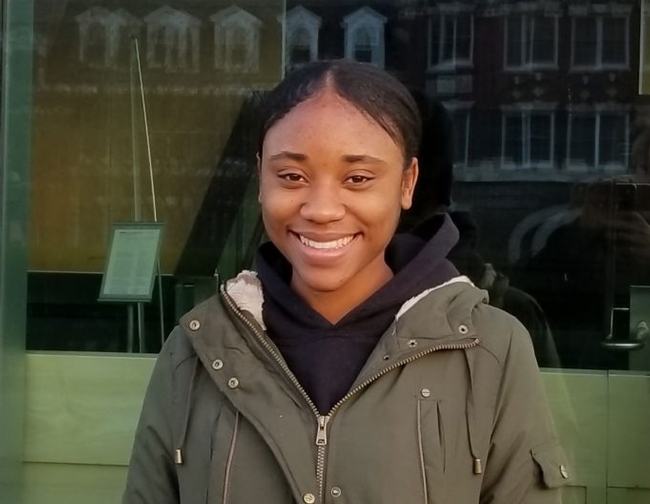Rensselaer Polytechnic Institute was not Tiana Young's first choice for college, even though Young wants to dual major in aeronautical and mechanical engineering, and the private university is one the top schools in the country for science, technology, math and engineering.
The school had one big drawback: Rensselaer's student body is more than two-thirds white and Asian, according to federal data. For Young, who is black and whose high school in Spring Valley, New York was almost entirely African-American and Hispanic, “the lack of diversity was a very big concern,” says the freshman. But Young, the daughter of Jamaican immigrants, needed significant financial aid to attend college, and Rensselaer made a financial offer she couldn't refuse.
Academically, the school has been challenging but rewarding, a sentiment echoed by other African-American freshman. “I feel like I'll leave here 1,000 times smarter and ready for any job,” says Young's friend Charles Omoregbee, an engineering major. While Young has made white friends in her dorm — everyone rallied to help her when a mouse scampered into her room and hid — and in the Society of Women Engineers, her closest friends are all African-American. Most white students are friendly, but small slights and one major incident have left Young and other African-American students stressed by more than just homework.
During the first month of school, a white student who is part of the alt-right group Turning Point USA created a Facebook post that called for the return of separate water fountains for whites and “Coloreds.”
Young and her African-American classmates were shaken up by the post, and equally angered by the fact that the school never publicly addressed the issue. Some even contemplated transferring. “When we got here they acted like it's all rainbows and sprinkles at Rensselaer, but when something happens then everyone is silent,” says Jenari Mitchell, a freshman computer science major.
Students of color studying science, technology, engineering and math (collectively known as STEM) are underrepresented at schools around the country and even though most don't face overt racism they face a set of challenges that have led to persistent issues of under-representation at the graduate levels and across STEM professions.
African-American and Latino workers comprise just 16 percent of the advanced manufacturing workforce, 15 percent of the computing workforce and 12 percent of the engineering workforce, rates that have remained essentially flat for more than a decade, according to the 2015 US News/Raytheon STEM Index. And yet some STEM industries are already facing shortages of qualified personnel, and others project major growth in the future. Encouraging blacks and Hispanics, both growing populations, to pursue STEM careers is both an equity issue and crucial for the economy, according to Rodney Andrews, an assistant professor of economics at the University of Texas at Dallas. But, experts say, higher education must do more to address a set of challenges that keep blacks and Hispanics from pursuing STEM degrees.
Paying for college can be a major obstacle for black and Hispanic students, who are more likely to live in poverty than their white peers and more likely to be the first in their family to attend college. They're also more likely to attend poorly resourced segregated public schools that lack the tough curriculum needed to prepare them for college-level STEM courses. When they arrive on campus, college culture also makes a difference to the number of black and Hispanic students pursuing STEM degrees Experts and students say colleges and universities, especially STEM research institutions, aren't doing enough to ensure that students of color don't switch majors or drop out entirely.
According to one recent study, 37.5 percent of white and Asian-American students completed STEM degrees after five years, while completion rates for African-American and Latino students were 22.1 percent and 18.4 percent respectively. “It's no longer enough to just teach students,” says Tim Scott, assistant provost for undergraduate studies at Texas A&M University. “We need to ask, ‘What tools do we need to retain them?'”
Eugene Fiorini, a mathematics professor at Muhlenberg College who oversees a summer preparatory program, says schools don't do enough to integrate students of color into campus life. “The research shows that the trouble these students have in college has nothing to do with intelligence they don't feel like they are part of the college and they drop out more because of cultural isolation,” he says.
For black and Latino students shifting from segregated high schools, where they rarely saw a white face, to STEM-oriented research institutions where blacks and Hispanics are a tiny percentage of the student population, the adjustment can be especially difficult. “When I got here I thought, ‘Wow, so this is what it means to be a minority,'” says Young. Rensselaer's student population is 15 percent black and Hispanic this year, according to statistics provided by the school. “It was a culture shock.”
To read the whole article visit The Hechinger report.
Source: Published originally on The Hechinger Report,To attract more blacks and Hispanics to STEM, universities must address racial issues on campus, by Stuart Miller, January 23, 2018.
